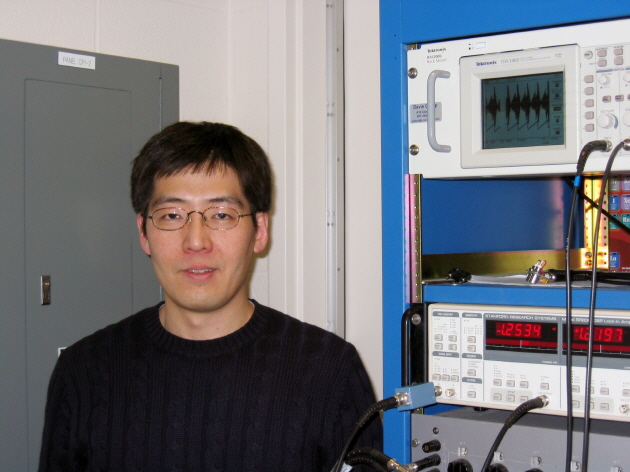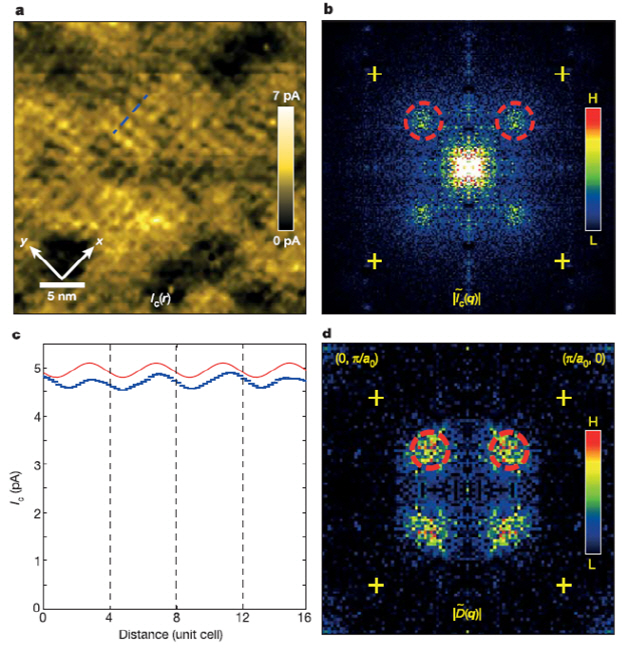
Professor LEE Jinho
Professor LEE Jinho's research team detected a Cooper-pair density wave at an atomic level, which was a breakthrough considering that the high-TC superconductivity has been ever elusive.
The research team observed atomic scale structure of Cooper-pairs in the superconductor Bi2Sr2CaCu2O8+x, a material that belongs to the family of high-temperature (High-TC) superconductors bismuth strontium calcium copper oxide, or BSCCO.
Conventional superconductors are not a recent discovery; conversely, they have been in commercial use for a number of decades but the extreme temperatures required, less than -263oC, prove difficult to attain and maintain, as opposed to high-TC superconductors where more manageable temperatures of -196oC are required. Superconductivity occurs under certain temperatures: electrons form pairs and suddenly the electrical resistance drops to zero and the magnetic field inside of the material is repelled.

Visualization of cooper-pairs in a high-TC superconductor
In nature, there are examples of emergence of macroscopic quantum states – superfluidity, Bose-Einstein condensation for example- where bosonic particles (bosons) condense and form one macroscopic quantum entity. Electrons which are fermions—not bosons—cannot condense into one entity. However, under extremely low temperatures fermions cleverly combine into pairs and act as if they are bosons; they condense into one state and form yet another kind of macroscopic quantum phase – superconductivity.
- The research was published in the April 14 issue of the Nature.
- SNU Dept. of Physics and Astronomy: http://phya.snu.ac.kr
Summary by Institute for Basic Sciences

